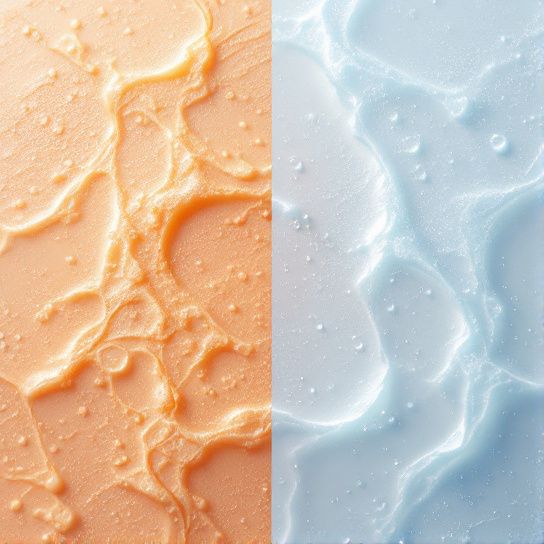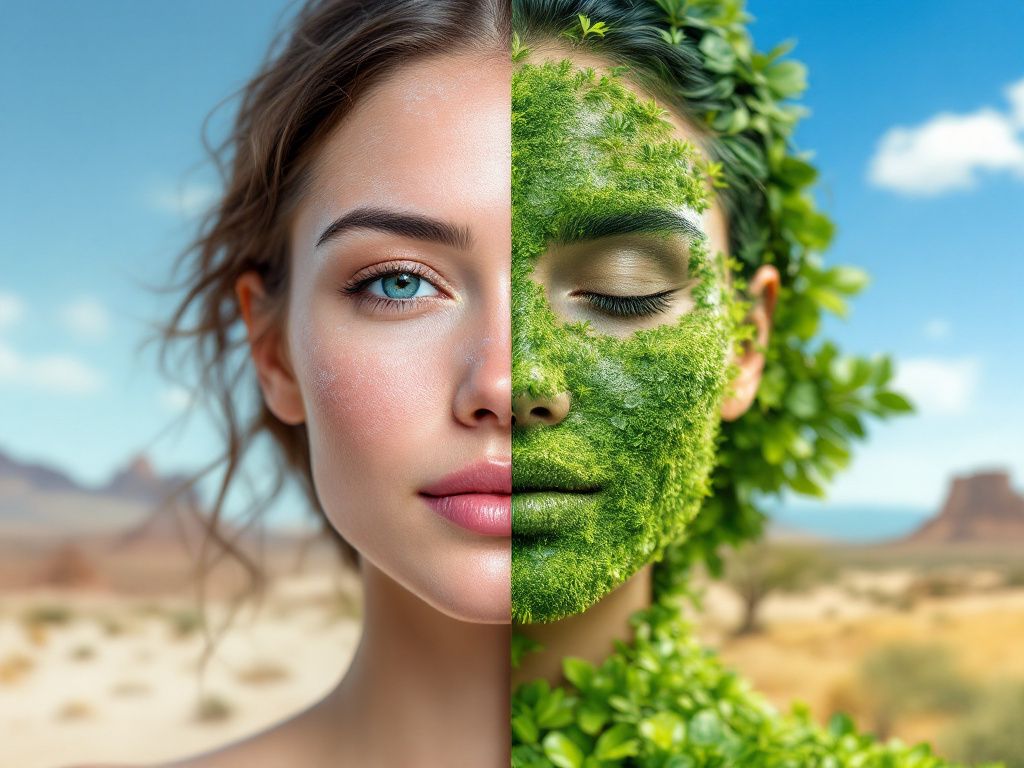Ever noticed how your skin throws a fit during a dry spell, suddenly erupting with dry skin pimples while you just try to stay hydrated? It’s like the desert decided to be your skin backdrop. You’re not alone, though. Weather plays such a pivotal role in how our skin behaves, and dealing with it can seem like performing a balancing act without a safety net. So, let’s dive in: why does your skin freak out with dry weather, and more importantly, what can you do about it?
Understanding Your Skin in Dry Weather
First, let’s set the scene: dry weather isn’t just annoying—it’s actually sucking the moisture right out of your skin. Imagine your skin is like a sponge. In humid weather, it stays plump and hydrated, but when it’s dry, that sponge shrivels, leading to an unhappy sign your face is giving you in the form of flaky skin and, worse yet, pimples. Yes, dry skin can lead to breakouts too. Sounds counterintuitive, right?
In dry conditions, your skin’s normal methods of moisture retention go out the window. The dry air zaps away oil, triggering your skin’s emergency response. It overproduces oil to compensate, and boom! Liz, your skin’s friendly acne assistant, decides to pay a visit. Fun times!
Why Skin Acts Up in Dry Weather
Here’s a quick rundown: lack of moisture outside leads to lack of moisture inside your skin. When the air’s devoid of humidity, it draws moisture from everywhere—including your skin’s natural barrier. And when your skin decides to play defense, it goes for oil. Unfortunately, there’s often too much of a good thing, clogging pores and inviting those dreaded dry skin pimples to join the party.
Trust me, whether you live in a desert or the humidity dropped to barren-like conditions thanks to the whims of weather, give your skin some extra attention. It’s like trying to grow a garden without water; your efforts need to match the dryness, or things get shriveled up pretty fast.

Skin Protection Strategies
Alright, enough doom and gloom. Let’s get to what you’re really here for: proactive strategies to protect your skin during dry spells.
1. Amp Up the Moisturizer Game
Here’s a little secret: your standard moisturizer might not cut it when dry weather throws down a challenge. Opt for thick, oil-based creams instead of water-based ones. Why? Think of them as a raincoat for your skin, holding in moisture much more efficiently.
Some folks swear by dermatologists’ go-to: humectants like glycerin or hyaluronic acid. They do wonders in anchoring moisture to your skin (that’s where moisture retention comes into play). Slather it on post-shower to lock in whatever moisture’s still hanging around. Give it a try—I promise it makes a noticeable difference!
2. Hydration Begins Within
What you feed your skin from the inside often impacts it just as much, if not more, than any cream could. You know where this is going, right? Yep, drink up! Keep yourself adequately hydrated by drinking plenty of water. While water alone won’t keep your skin plump and hydrated, it’s one part of the routine worth sticking to. Plus, sipping on herbal teas—like chamomile or green tea—can add extra skin-friendly antioxidants into the mix.
3. Humidifier at Home
Sadly, you can’t control the weather—if I could, we’d stick it on sunny and 70° all year. But inside your home? That’s within your power. A humidifier can work magic, bringing that much-needed moisture back into the air. Your whole body’s going to thank you, not just your skin. Suddenly the indoors goes from desert-like conditions to a cozy hydration haven. Aim for the 40-60% humidity range if you can.

4. Gentle Cleansing
We’ve all been tempted to scrub the daylights out of unhappy skin. Fight the urge! Over-scrubbing just aggravates your skin more. Instead, switch to a gentle cleanser. Something non-foaming—less lather means less soap and surfactants, which tend to dry out skin further. Sulfate-free options usually work wonders on stressed complexions.
Splash some lukewarm water, none of that hot, steamy stuff that feels great but strips natural oils. It’s the little things, right?
5. Sun Protection Isn’t Seasonal
Sometimes we forget that just because it’s not scorching hot, the sun’s rays are still waging war on our skin barrier. Don’t skip the sunscreen. At least SPF 30, and imperatively, every day, regardless of clouds or car rides! Those UVA rays know no season.
6. Opt for Oil Cleansing at Night
If your skin is super dry, ditch the evening cleanser altogether and hop aboard the oil cleansing train. Various natural oils—like jojoba or sweet almond—do a comfy job at removing the grimy buildup, without stripping the good stuff off your skin. Seriously, you might just find this straightforward switch is transformative.
7. Consider Adjusting Diet

Apart from hydration, fatty acids are your skin’s best buddy. Omega 3-rich foods like salmon or flaxseeds provide a nutritional companion to your topical efforts. Plus, it’s an excuse to amp up your avocado toast game. Seriously, how can you go wrong?
8. Avoid Overly Fragrant Products
Smell-good stuff is tempting, but they often contain alcohol, which can exacerbate dryness. It’s a cut-throat world: what smells nice often doesn’t glo-up your epidermis like you’d hope. Opt for fragrance-free or hypoallergenic products. Your skin will notably chill out.
Recap and Final Thoughts
Alright, we’ve unpacked quite a bit. It’s all about finding ways to keep your skin happy, even when the weather isn’t cooperating. The goal here is turning those flaky, dry skin moments into smooth sailings.
Water, moisturizer, humidifiers—there are quite a few tools up your sleeve now to put your skin’s chummed-out conditions onto a happier path. Consistency really does pay off with skincare. It’s all about laying groundwork for better days, especially with the daunting challenge that dry weather brings to the stage. Skincare might not exactly be rocket science, but fickle dry weather makes it an ongoing project.
Always be kind to your skin. This guide isn’t the absolute manual but it’s a start, nudging you toward finding your perfect routine amidst those pesky dry spells. Your skin relies on you to play defensive. So suit up and face the forecast with a warmth of knowing you’ve got the mettle to handle whatever desert-ish climate whim Mother Nature throws your way.
Stay moisturized, well-hydrated, and always channel a radiant skin vibe—even when faced with unsettling pimples. Hang in there, we’ll beat the dry spell together.
Frequently Asked Questions
Can Dry Skin Cause Pimples?
Dry skin itself does not directly cause pimples, but it can contribute to the development of acne. When the skin is dry, it may produce more sebum to compensate for the lack of moisture, which can lead to clogged pores and acne. Additionally, dry skin can make pores more susceptible to breaking open, allowing bacteria to penetrate deeper into the skin[3][4][1).
How Should I Cleanse My Skin If I Have Dry Skin and Pimples?
For dry skin with pimples, it is crucial to use a gentle acne cleanser that contains ingredients like benzoyl peroxide or salicylic acid. Avoid over-cleansing or over-exfoliating, as this can strip the skin of its natural moisture and worsen both dryness and acne. Use lukewarm water and avoid harsh, astringent products that can further dry out the skin[1][2][4).
What Moisturizers Are Suitable for Dry Skin with Pimples?
Choose moisturizers labeled “non-comedogenic” to ensure they do not clog pores. Opt for moisturizers that are formulated for dry, sensitive skin and contain ingredients like hyaluronic acid, ceramides, or niacinamide. Avoid moisturizers with lanolin, mineral oil, petrolatum, or coconut oil, as these can clog pores and exacerbate acne[1][2][4).
How Can I Prevent Dry Skin and Pimples Through My Skincare Routine?
To prevent dry skin and pimples, maintain a gentle skincare routine that includes using a hydrating acne cleanser, a non-comedogenic moisturizer, and avoiding harsh products. Exfoliate gently with chemical exfoliants, and stay hydrated by drinking plenty of water and incorporating hydrating foods into your diet. Avoid picking at acne blemishes or using abrasive scrubs, which can further irritate the skin[1][2][4]).
References










